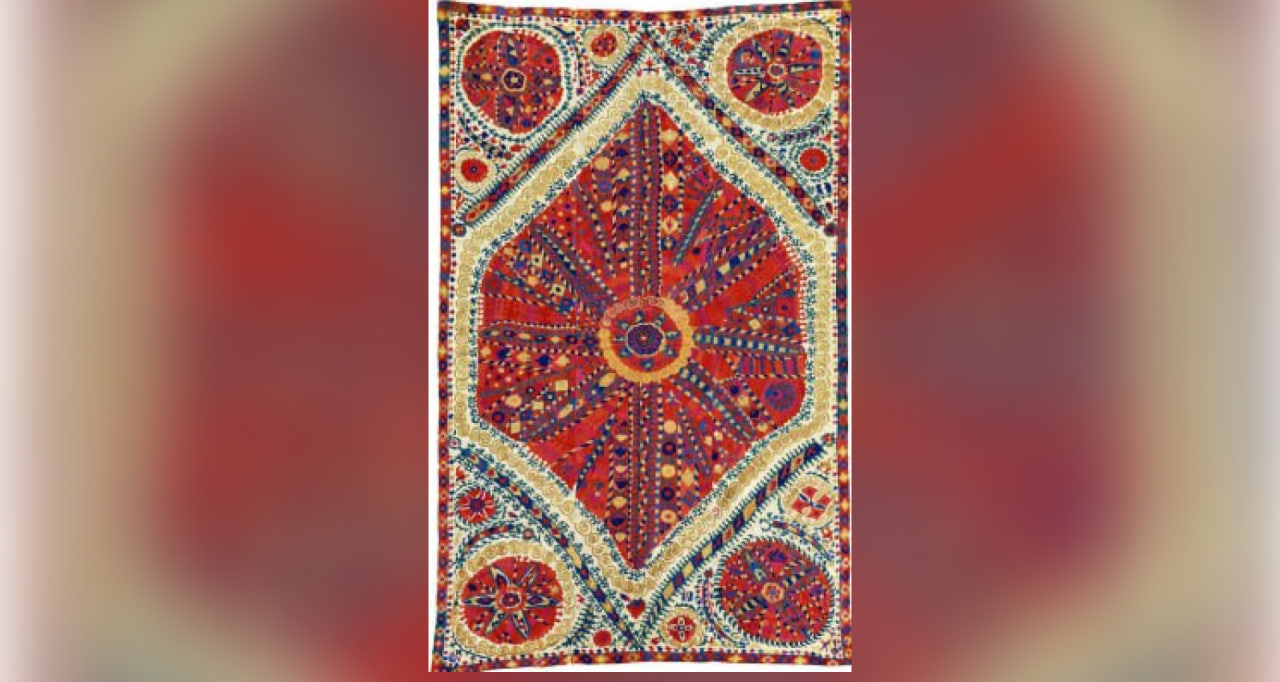A 250-year-old unique suzani tells the story of Uzbekistan’s rich cultural heritage

Another unique artifact representing the rich cultural heritage of Central Asia, particularly Uzbekistan, may be displayed in the exposition of the Center of Islamic Civilization a large suzani with a rhombic medallion design.
This piece dates back to the 18th century and, according to Frances (2000), belongs to the “Type A design” group. At its center is a hexagonal medallion with projecting triangular tips. The core of the medallion contains concentric circles surrounded by spiral motifs in the shape of “ram’s horns”. These elements are considered characteristic features of this group.
The use of color in the piece is both delicate and masterful. The spirals in the form of ram’s horns, worked in two shades of yellow, enhance the depth of the design. At the same time, pink, ochre, and red hues are harmoniously arranged within intersecting panels of the medallion, making them stand out vividly against the background of smaller multicolored patterns.
In their famous 1978 article on large medallion suzanis, Michael Frances and Robert Pinner described them as follows:
“Although the embroidery is coarse, the motifs are so intricate and delicate that the overall impression conveys power and significance”.
In 1978, only eight large medallion suzanis were known worldwide. After Frances’s re-examination in 2000, this number rose to 54. Today, their total is estimated at around 70, each reflecting the high craftsmanship and artistic potential of Central Asian embroidery traditions.
Such suzanis were used not only as home decorations but also at ceremonial occasions, weddings, and even as diplomatic gifts. Through them, not only aesthetic taste but also cultural heritage and the unique artistic vision of local masters were passed down from generation to generation.
Most read

Over 100 experts from more than 20 countries of the world are in Tashkent!

The Center for Islamic Civilization – a global platform leading towards enlightenment

The museum of the Center for Islamic Civilization in Uzbekistan has been further enriched: unique artifacts from different parts of the world have been presented as gifts











